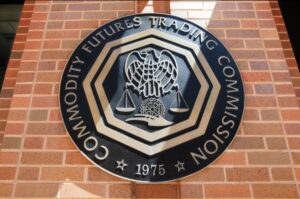CFTC Launches Initiative to Allow Stablecoins as Derivatives Market Collateral
The U.S. Commodity Futures Trading Commission has announced a groundbreaking initiative to enable stablecoins as tokenized collateral in derivatives markets. This regulatory shift marks a significant step toward integrating digital assets into traditional financial infrastructure. Acting Chairman Caroline Pham revealed the proposal on September 23, 2025, signaling the agency’s commitment to modernizing derivatives trading through blockchain technology.
The initiative builds upon the CFTC’s ongoing efforts to create clear regulatory frameworks for digital assets. Industry executives have welcomed this development as it could unlock substantial capital flows into cryptocurrency markets. The proposal represents a fundamental change in how collateral functions within the $600 trillion global derivatives market.
CFTC Stablecoins Initiative Transforms Traditional Collateral Systems
CFTC Acting Chairman Caroline D. Pham announced the CFTC will launch an initiative for the use of tokenized collateral, including stablecoins, in derivatives markets. This initiative follows successful engagement with crypto industry leaders through the CFTC’s Crypto CEO Forum.
The regulatory body plans to work closely with stakeholders to develop comprehensive guidelines for implementing tokenized collateral systems. Market participants can submit comments on the proposal until October 20, 2025, allowing for extensive industry input.
Derivatives market participants use traditional assets like government bonds and cash as collateral. The new framework would expand acceptable collateral to include properly regulated stablecoins and other tokenized assets. This expansion could significantly increase operational efficiency and reduce settlement times for market participants.
Derivatives Market Collateral Requirements Drive Stablecoin Adoption
The derivatives market operates on complex margin and collateral requirements to manage counterparty risk. Traditional collateral posting involves multiple intermediaries and lengthy settlement processes. Stablecoins could streamline these operations through 24/7 availability and programmable smart contracts.
The U.S. Commodity Futures Trading Commission is starting an initiative to allow stablecoins as tokenized collateral to satisfy margin needs in the vast derivatives market. This change could reduce operational costs and improve capital efficiency for market participants.
Financial institutions have expressed a strong interest in using digital assets for collateral management. Major banks and trading firms view stablecoins as efficient alternatives to traditional collateral mechanisms. The blockchain-based infrastructure offers transparency and real-time settlement capabilities that legacy systems cannot match.
Regulatory Framework Shapes Stablecoin Collateral Implementation
The GENIUS Act, signed into law in July 2025, established the first comprehensive federal framework for stablecoins. This legislation requires regular audits, anti-money laundering compliance, and clear consumer protection rules.
The regulatory foundation provides confidence for institutional adoption of stablecoin collateral systems. Compliance requirements ensure that participating stablecoins meet strict reserve backing and operational transparency standards. These safeguards address previous concerns about stablecoin stability and regulatory oversight.
The CFTC’s initiative aligns with broader regulatory efforts to integrate digital assets into mainstream finance. Federal agencies have coordinated their approach to avoid conflicting requirements and ensure consistent implementation across markets.
Market Impact of Tokenized Collateral Exceeds Initial Expectations
Early market response indicates significant enthusiasm for the CFTC’s stablecoin collateral initiative. Crypto executives anticipate increased institutional demand for compliant stablecoins as collateral instruments. This demand could drive substantial growth in stablecoin market capitalization and usage.
Traditional financial institutions are preparing infrastructure upgrades to accommodate tokenized collateral requirements. Technology providers report increased interest in blockchain-based collateral management solutions. The integration of digital assets into derivatives markets could accelerate broader cryptocurrency adoption.
Analysts project that stablecoin collateral implementation could reduce systemic risk through improved transparency and faster settlement. The programmable nature of smart contracts enables automated collateral adjustments based on market conditions. This automation could prevent the margin calls and liquidity crises that have historically plagued derivatives markets.
Stakeholder Engagement Accelerates Stablecoin Integration Timeline
New crypto industry leaders have joined CFTC committees to help shape policy. This collaborative approach ensures that regulatory requirements align with technological capabilities and market needs.
The CFTC has established working groups focused on technical implementation details and operational standards. Industry participants provide expertise on blockchain infrastructure requirements and risk management protocols. This partnership model has proven effective in previous regulatory initiatives.
Market infrastructure providers are developing integrated solutions that combine traditional derivatives trading with tokenized collateral management. These platforms aim to provide seamless user experiences while maintaining regulatory compliance across all transactions.
Conclusion
The CFTC’s stablecoin collateral initiative represents a transformative moment for digital assets and traditional derivatives markets. By enabling tokenized collateral systems, regulators acknowledge the maturation of cryptocurrency infrastructure and its potential to improve market efficiency. Industry stakeholders must now work collaboratively to ensure successful implementation while maintaining the highest risk management and regulatory compliance standards.

